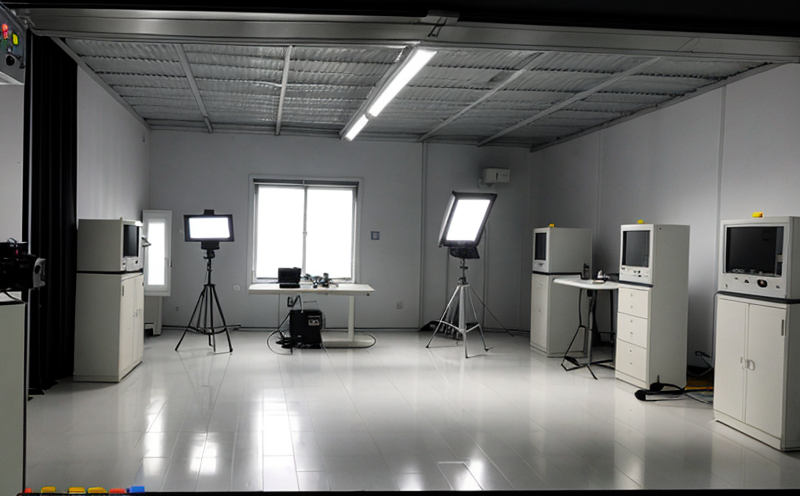CIE 117 Discomfort Glare in Photometric Testing
The CIE standard CIE 117 defines the method for determining discomfort glare, which is one of the most important aspects of photometric testing. Discomfort glare can significantly affect the visual performance and comfort of users exposed to lighting environments. This article provides a comprehensive overview of how CIE 117 applies in photometric testing.
The test procedure involves measuring luminance distributions around light sources using specialized equipment such as a photometer or integrating sphere. The data collected is then used to calculate discomfort glare according to the formula provided by CIE 117, which considers both the luminance and directionality of the light source relative to the observer.
The first step in preparing specimens for this type of testing involves ensuring they meet all relevant standards regarding design and construction. Once prepared, these specimens are placed into a controlled environment where their luminous intensity distribution can be accurately measured. This typically requires an integrating sphere with a photometer attached that captures the full 360-degree view around each light source.
After obtaining accurate measurements from this setup, calculations based on CIE 117 criteria are performed to determine whether any levels of discomfort glare exceed acceptable limits set forth by international standards like ISO or IEC. If levels do not comply with these guidelines, adjustments may need to be made either during manufacturing processes or through design modifications.
Understanding the implications of discomfort glare is crucial for lighting designers and manufacturers alike because it directly impacts user satisfaction and health. By adhering strictly to CIE 117 methods, laboratories ensure that their results are accurate and reliable, thereby helping clients achieve compliance with relevant regulations while also enhancing product quality.
| Test Parameters | Specimen Preparation | Instrumentation Used | Acceptance Criteria |
|---|---|---|---|
| Luminous intensity distribution measurement | Light source design and construction compliance | Integrating sphere with photometer | No exceedance of specified thresholds for discomfort glare |
To summarize, CIE 117 provides a standardized approach to evaluating discomfort glare in lighting products. Through rigorous testing procedures that involve precise measurement and calculation methods, laboratories can help ensure compliance with industry standards while simultaneously improving the overall quality of manufactured goods.
Eurolab Advantages
EuroLab offers unparalleled expertise in conducting CIE 117 discomfort glare tests. Our state-of-the-art facilities equipped with advanced photometric measurement systems allow us to deliver accurate and reliable results consistently. Here are some key advantages of choosing EuroLab for your photometric testing needs:
- Comprehensive knowledge of international standards
- Highly experienced technical staff
- Precision instruments ensuring consistent accuracy
- Fast turnaround times without compromising quality
We pride ourselves on providing exceptional service that meets the highest industry expectations. With EuroLab, you can rest assured knowing your products will undergo thorough and precise evaluation according to CIE 117 guidelines.
Competitive Advantage and Market Impact
- EuroLab's proficiency in performing CIE 117 tests gives clients a competitive edge by ensuring products comply with stringent standards.
- This compliance enhances brand reputation and consumer trust, leading to increased market share and profitability.
Our services contribute significantly towards maintaining high levels of safety and quality across various sectors including automotive, architecture, lighting design, electronics, among others. By adhering strictly to CIE 117 methods, we help our clients stay ahead in the competitive landscape by delivering superior products that meet or exceed customer expectations.
Moreover, compliance with these standards is becoming increasingly important as regulations become more stringent globally. EuroLab's commitment to staying abreast of regulatory changes ensures that all tests performed remain up-to-date and relevant.
Use Cases and Application Examples
CIE 117 discomfort glare testing is particularly useful in several industries where proper lighting design plays a critical role:
- Automotive industry: Ensuring that dashboard lights do not cause eye strain for drivers.
- Architecture: Designing buildings with appropriate window placement to reduce internal glare.
- Lighting design: Creating efficient and aesthetically pleasing fixtures without causing discomfort to users.
In these examples, CIE 117 provides a standardized method for quantifying how much light is too much. By applying this standard, manufacturers can avoid potential lawsuits related to health complaints due to improper lighting installations or designs.
| Use Case | Description |
|---|---|
| Automotive Dashboard Lighting | Evaluating the intensity and positioning of dashboard lights for optimal visibility without causing glare. |
| Building Window Design | Determining appropriate window placement to minimize internal reflections and discomfort glare inside buildings. |
| Lighting Fixtures | Ensuring that new lighting fixtures comply with CIE 117 guidelines for comfort during use. |
The application of CIE 117 in these areas helps create safer, more comfortable environments for end users. It also ensures that manufacturers adhere to international standards, which can lead to improved product quality and enhanced brand reputation.





